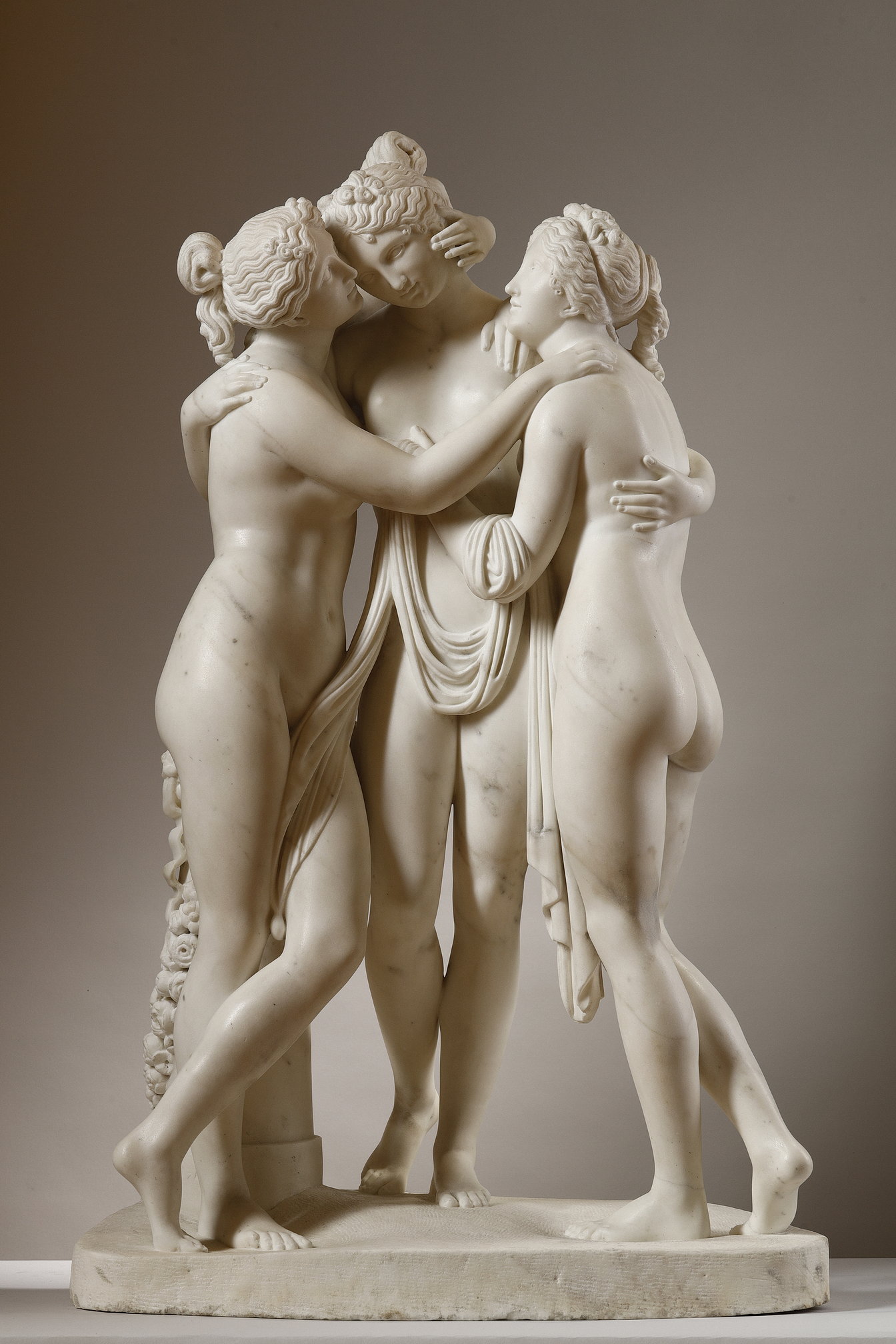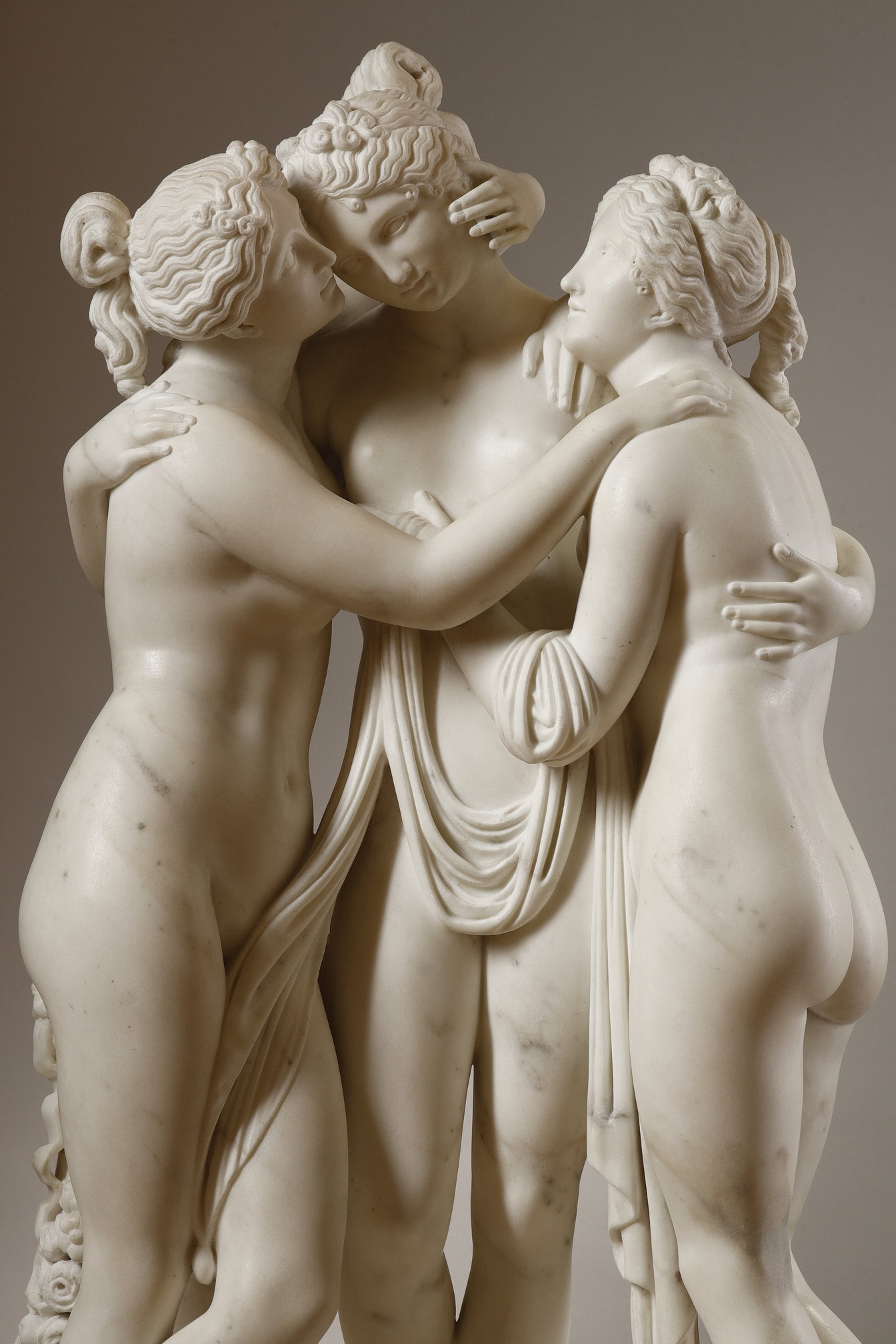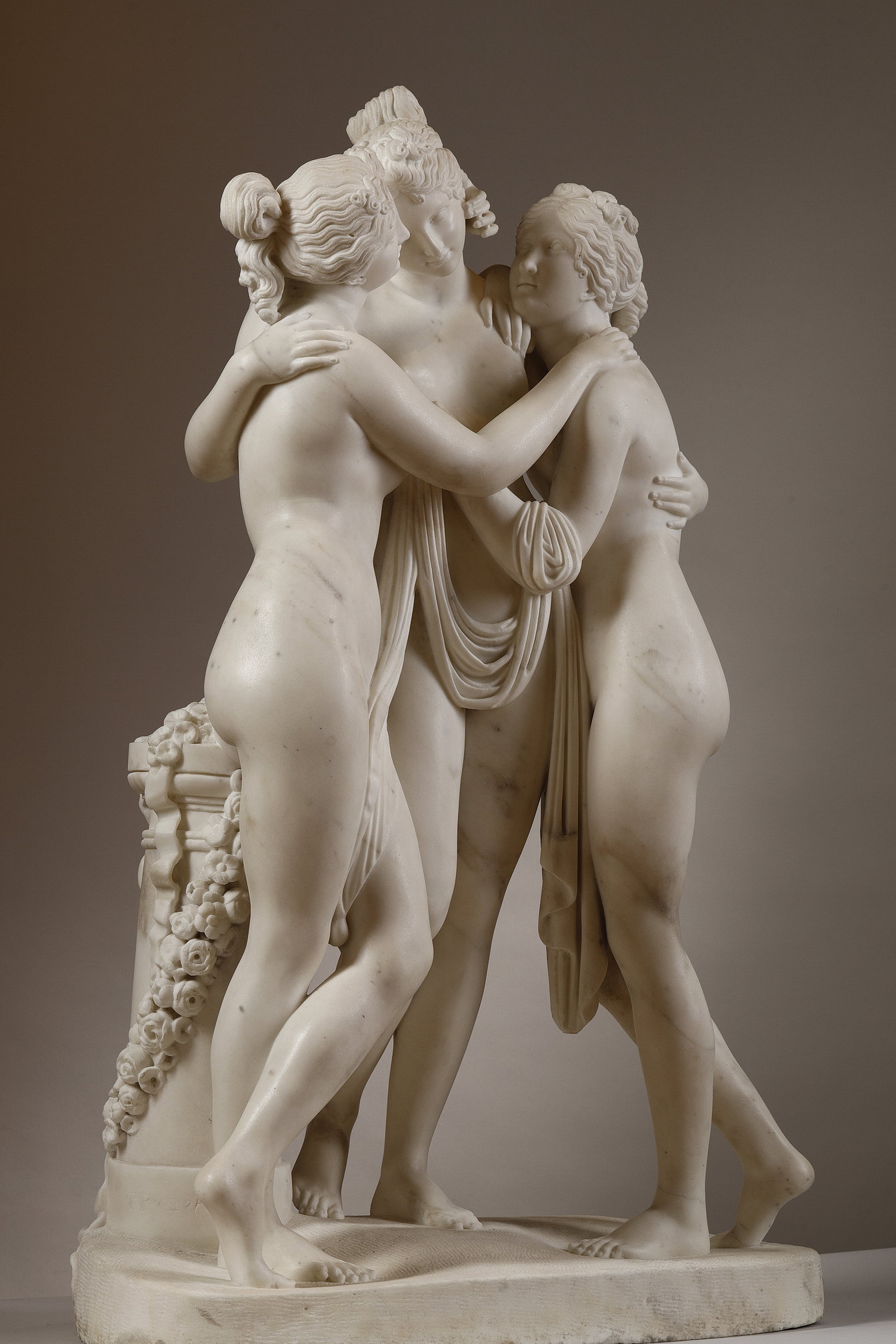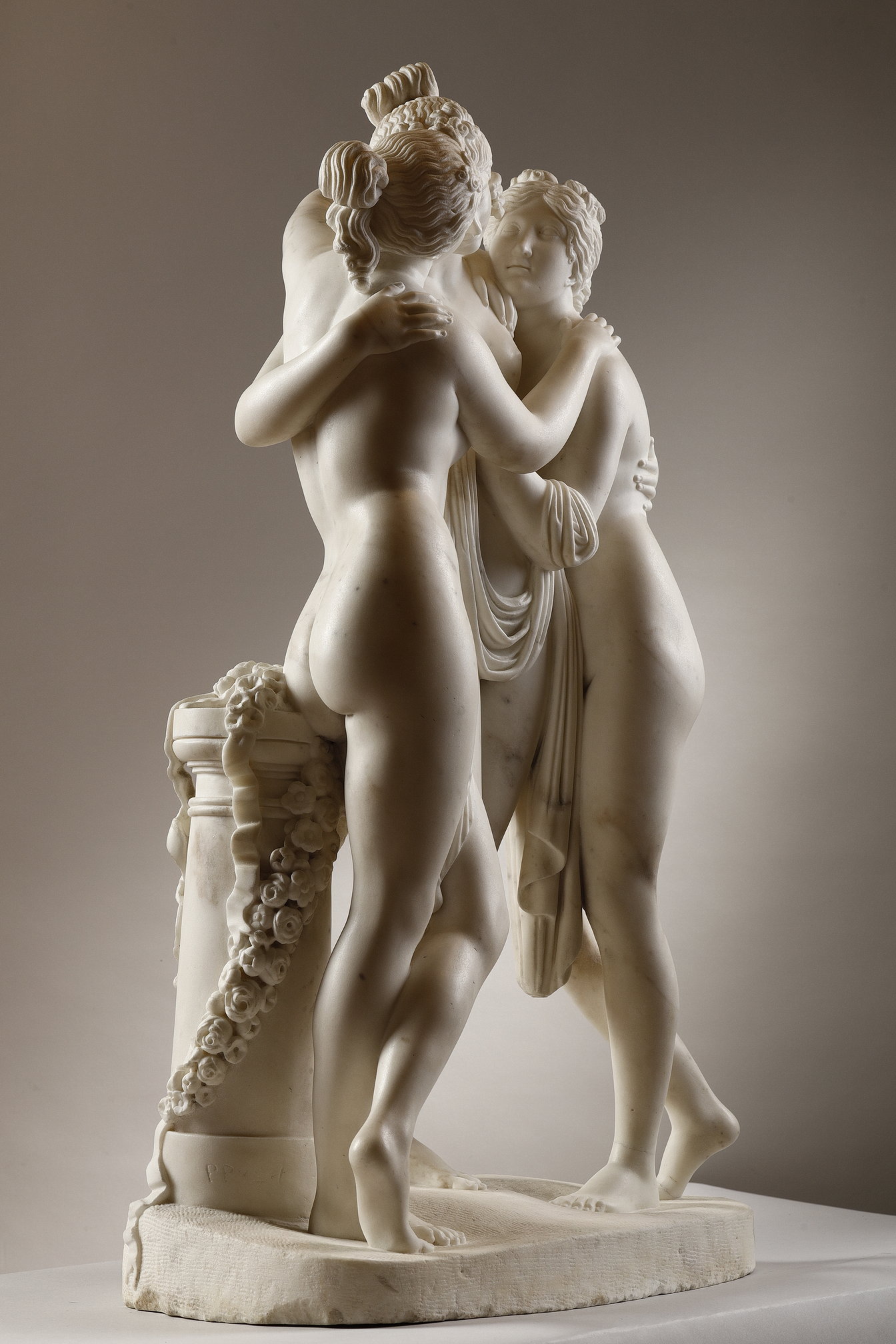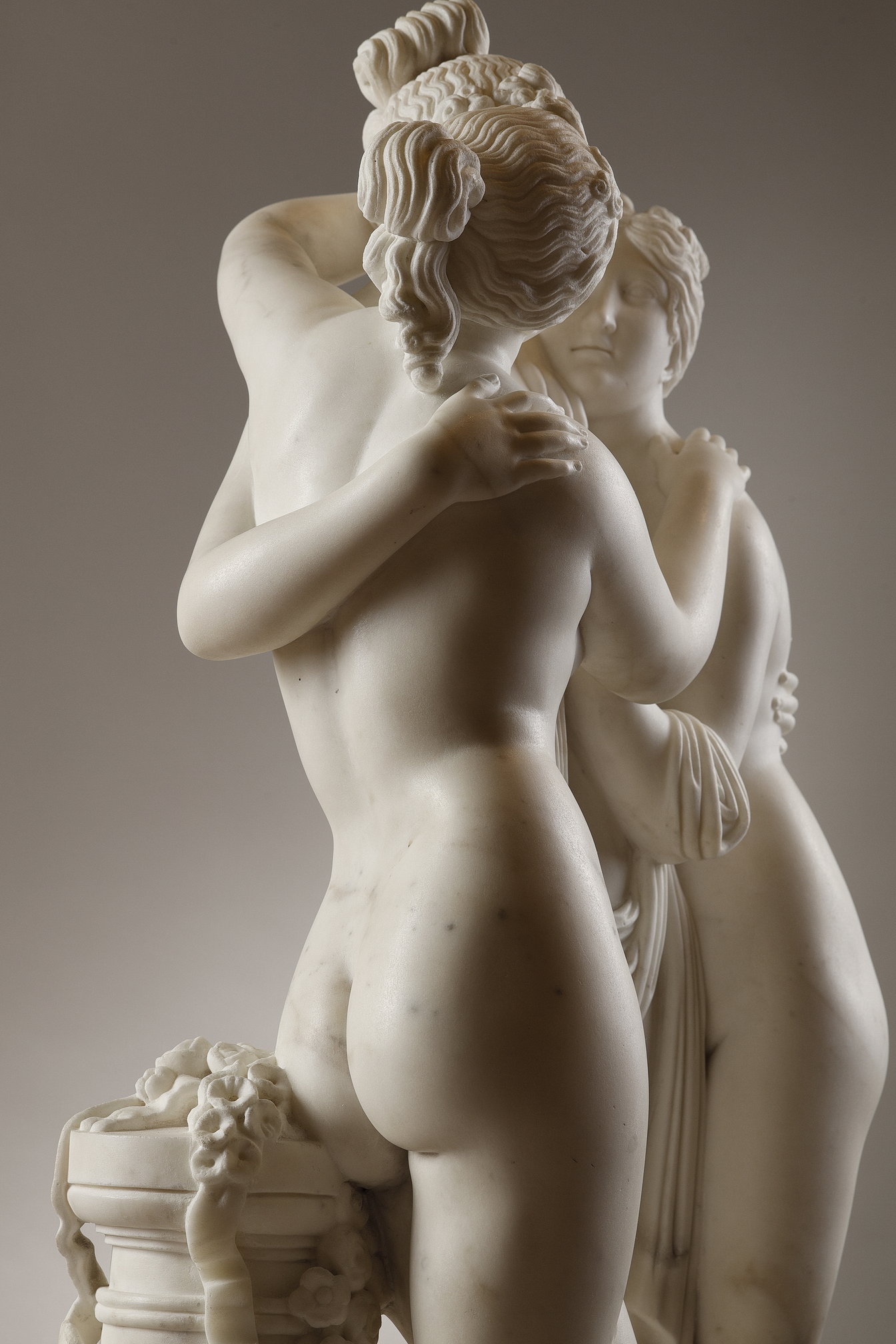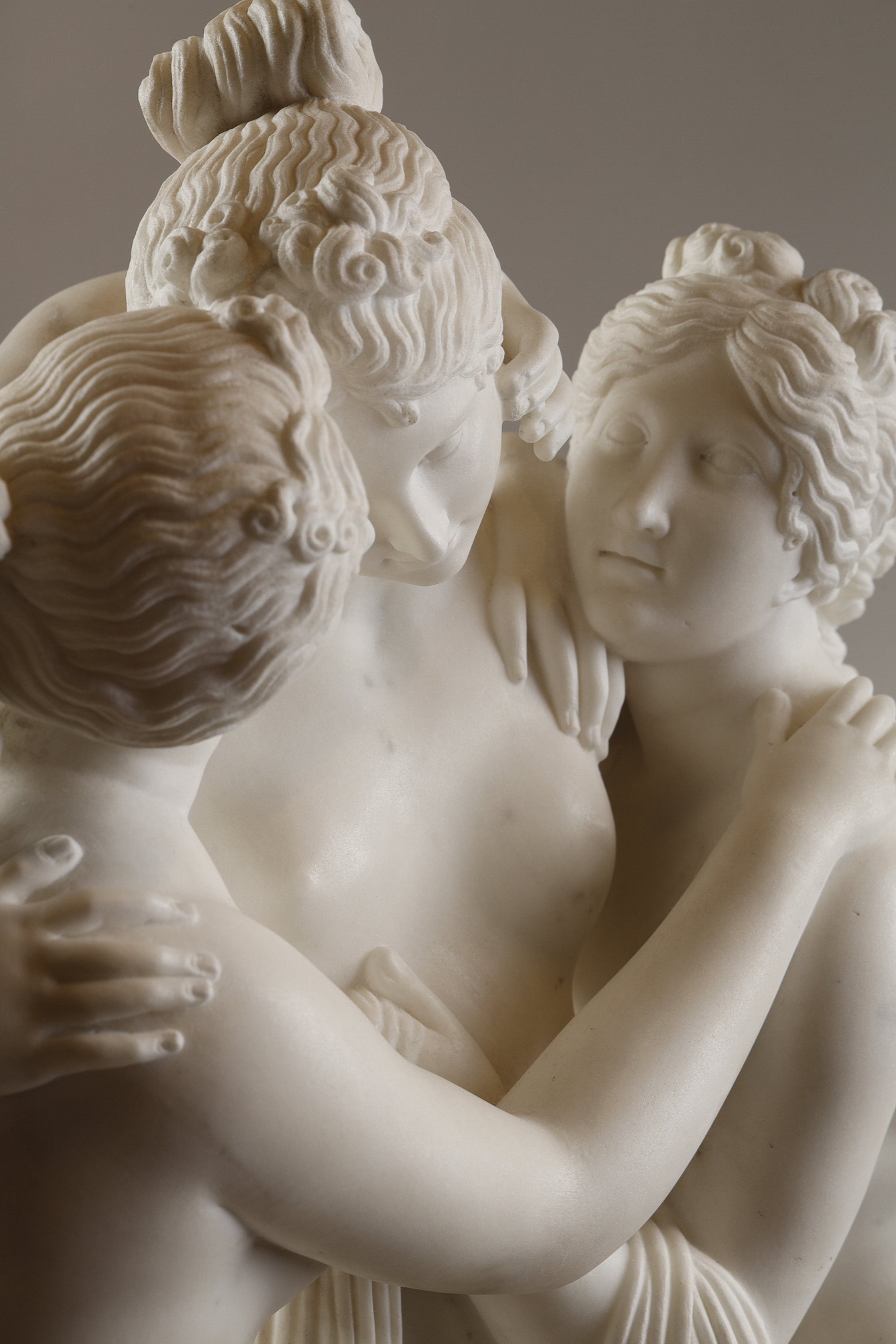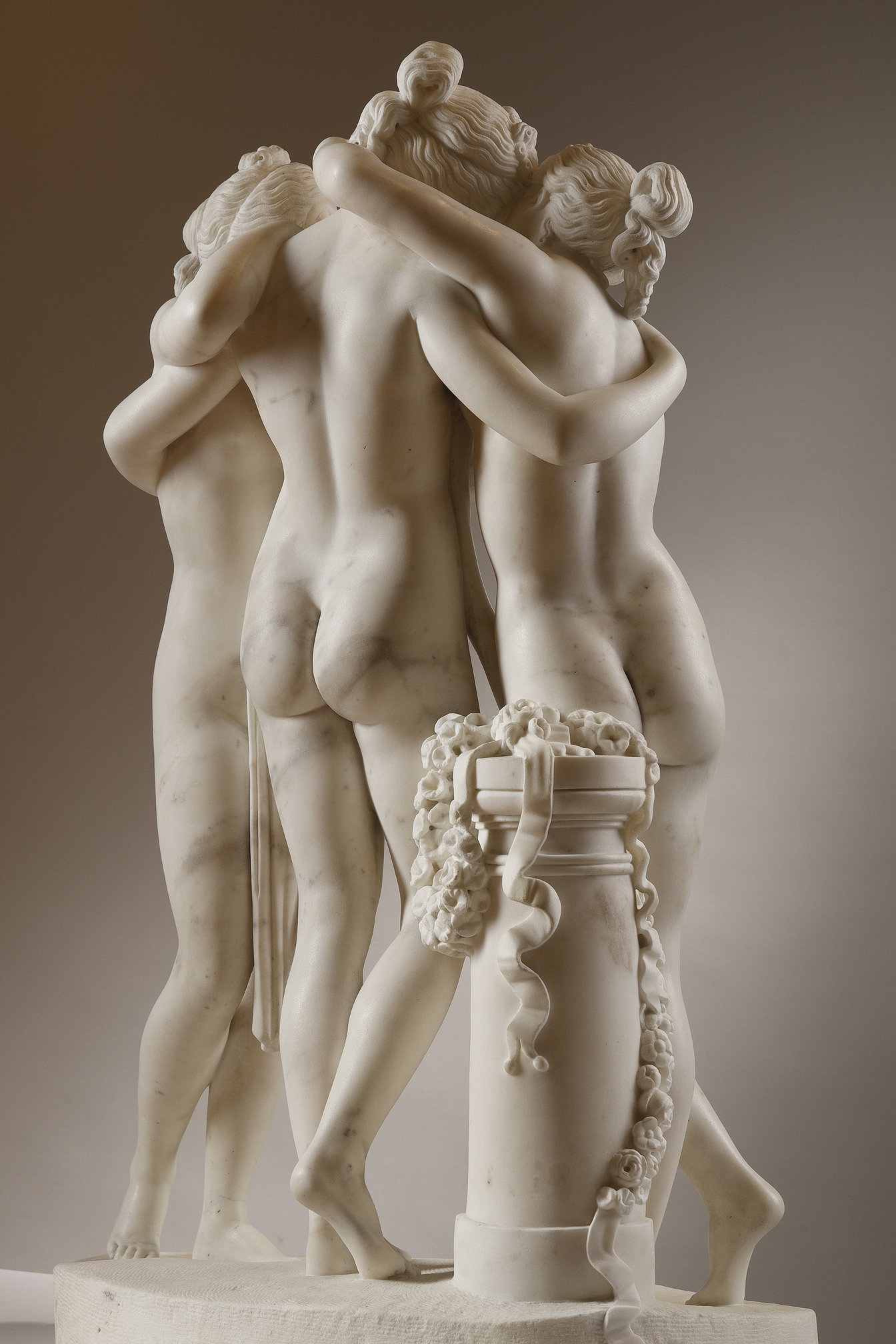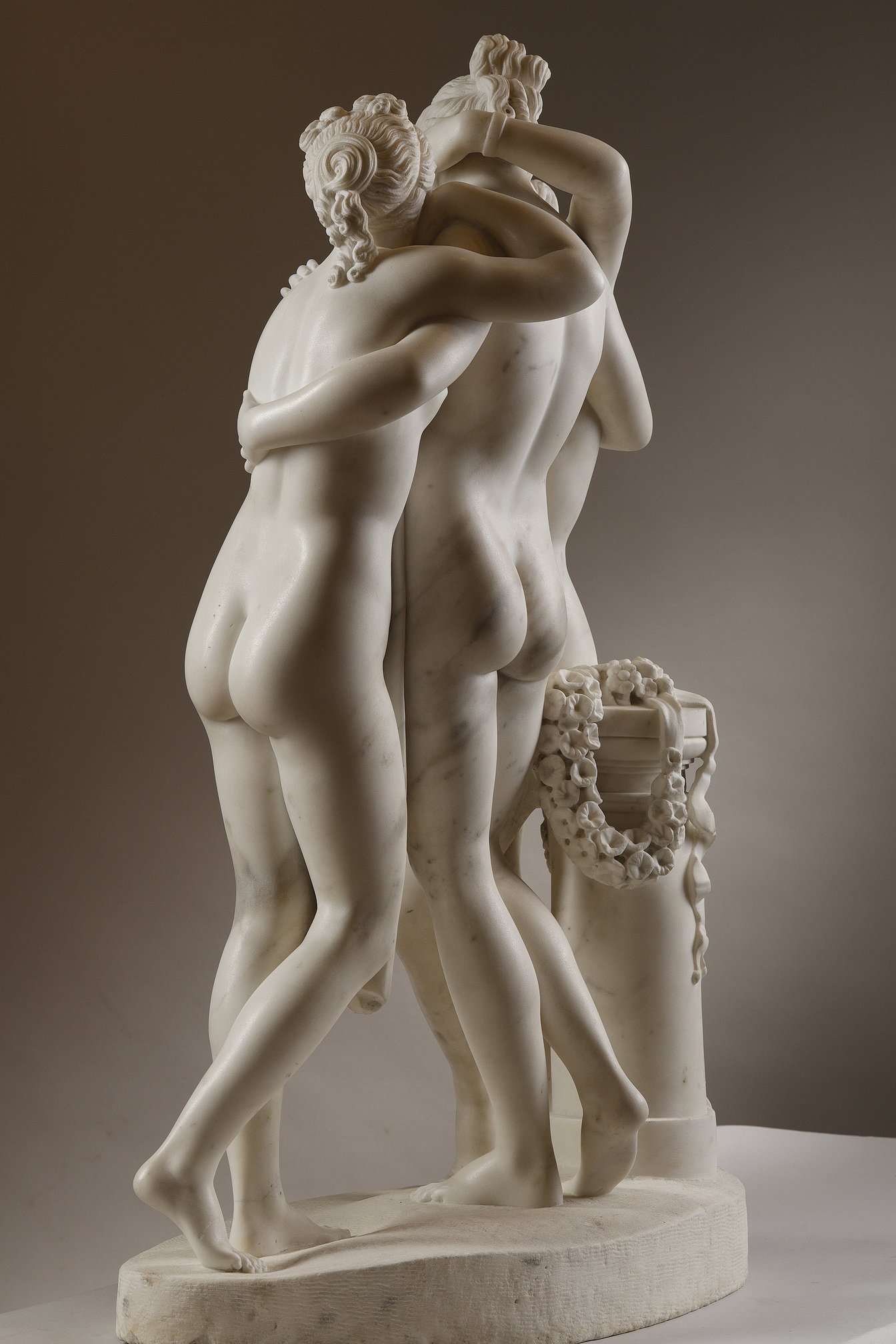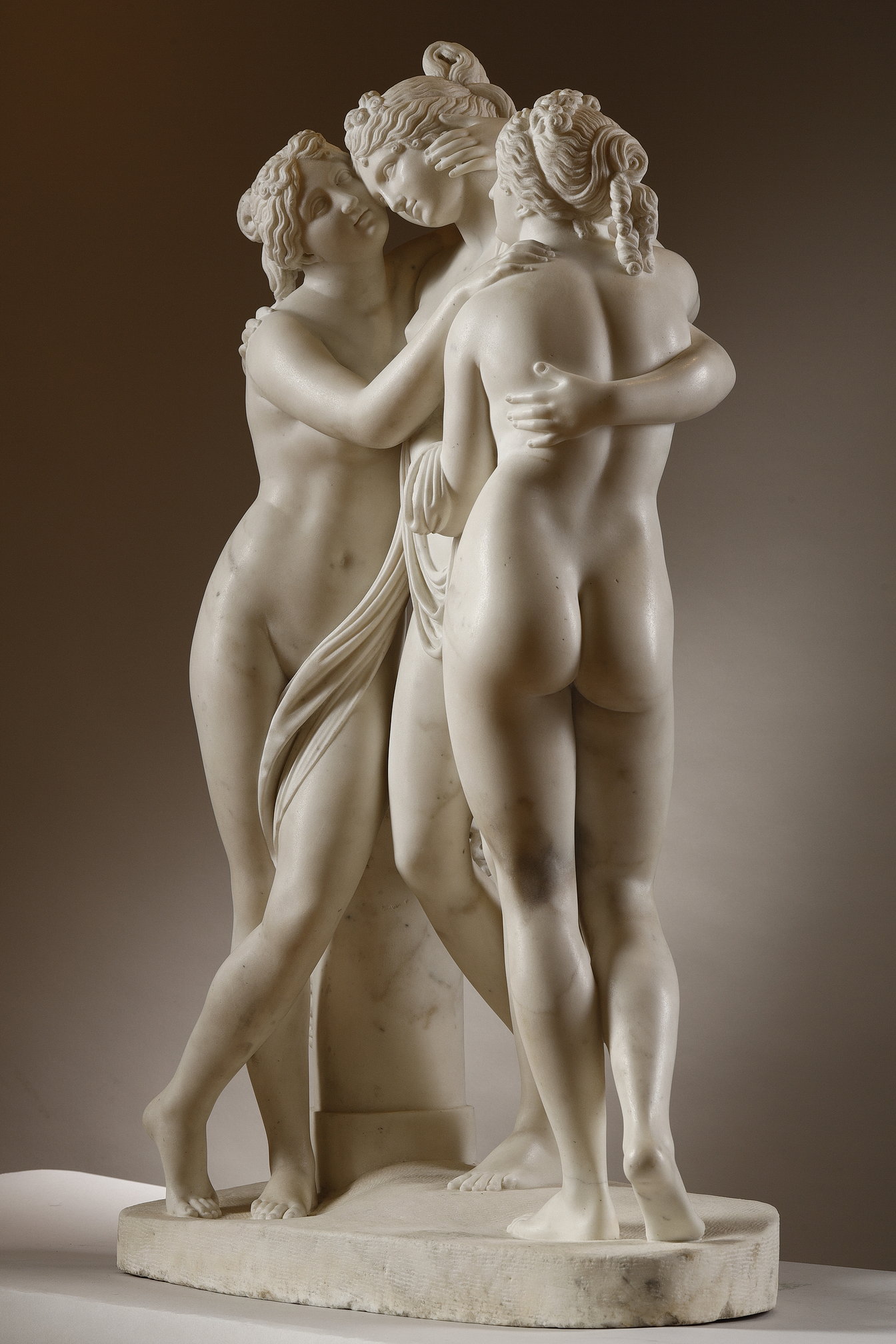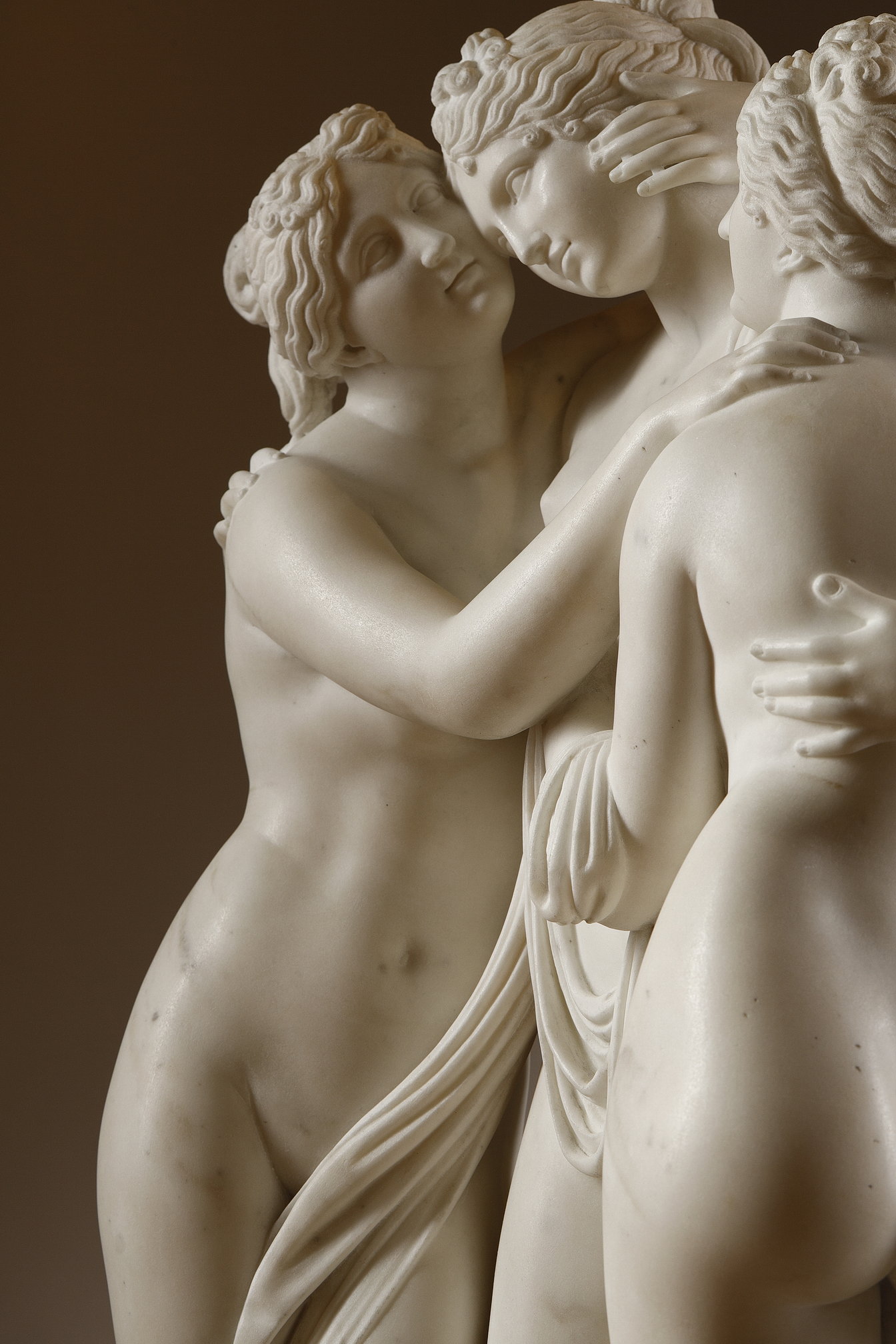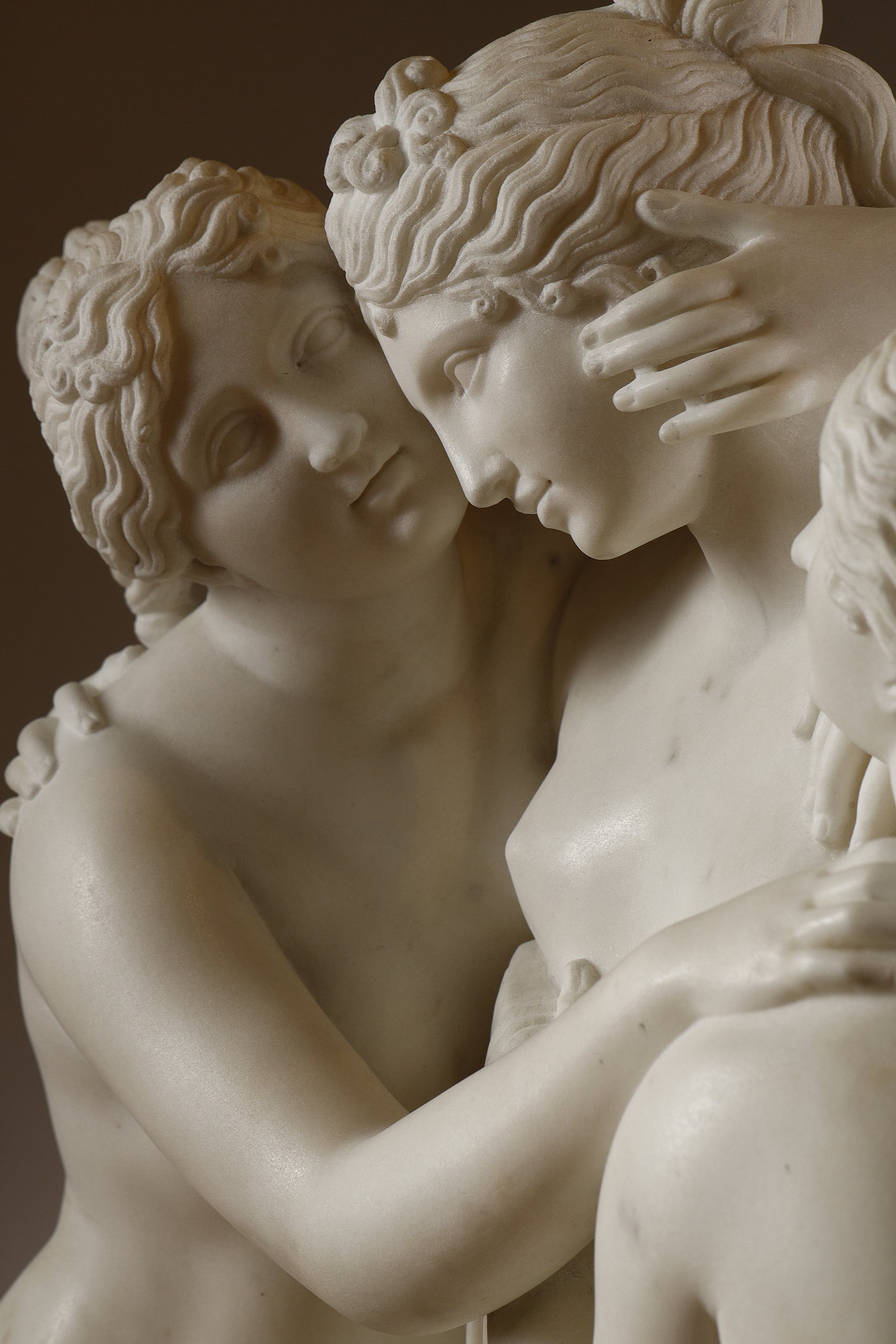THE THREE GRACES
PROBABLY FRENCH (late 19th century)
French
Date : late 19th century
Dimensions : 83 x 51 x 30 cm
Material : White Carrara marble
Provenance : Private Belgian collection
Historical and artistic context
This exceptional white marble sculpture represents the timeless motif of The Three Graces, a subject rooted in Greco-Roman mythology and immortalized in Western art through the famous neoclassical model by Antonio Canova (1814–1817). As an emblem of beauty, joy, and abundance, this composition has inspired numerous interpretations and editions throughout the 19th and 20th centuries, both in bronze and marble.
While other versions exist in varying sizes and levels of finish, this particular sculpture stands out as one of the finest known executions of Canova’s original composition, rendered with exceptional technical precision and fidelity to the original design. The marble is superbly worked, with elegantly modelled figures, meticulous detailing of hands, drapery, and hair, and a surface finish of exceptional clarity and smoothness.
The composition is faithful to Canova’s structure: three nude female figures arranged in a circular embrace, their poses perfectly balanced through a subtle play of contrapposto and interlocking gestures. The anatomy is rendered with graceful naturalism, the transitions between limbs and torsos are fluid, and the overall rhythm of the group is serene and harmonious.
Even the reverse is executed with care, showing the backs, arms, and flowing hairstyles with the same level of finesse. A central column adorned with garlands of flowers anchors the group compositionally and symbolically.
This sculpture is not only remarkable for its subject and inspiration, but for its intrinsic sculptural quality. The choice of a fine-grained white Carrara marble, the high level of execution, and the overall purity of form place this work among the most refined decorative neoclassical sculptures produced.
It is an outstanding example of 19th-century craftsmanship paying homage to one of the most iconic models in European art history—with a level of finish and expressive harmony rarely encountered in similar works.

